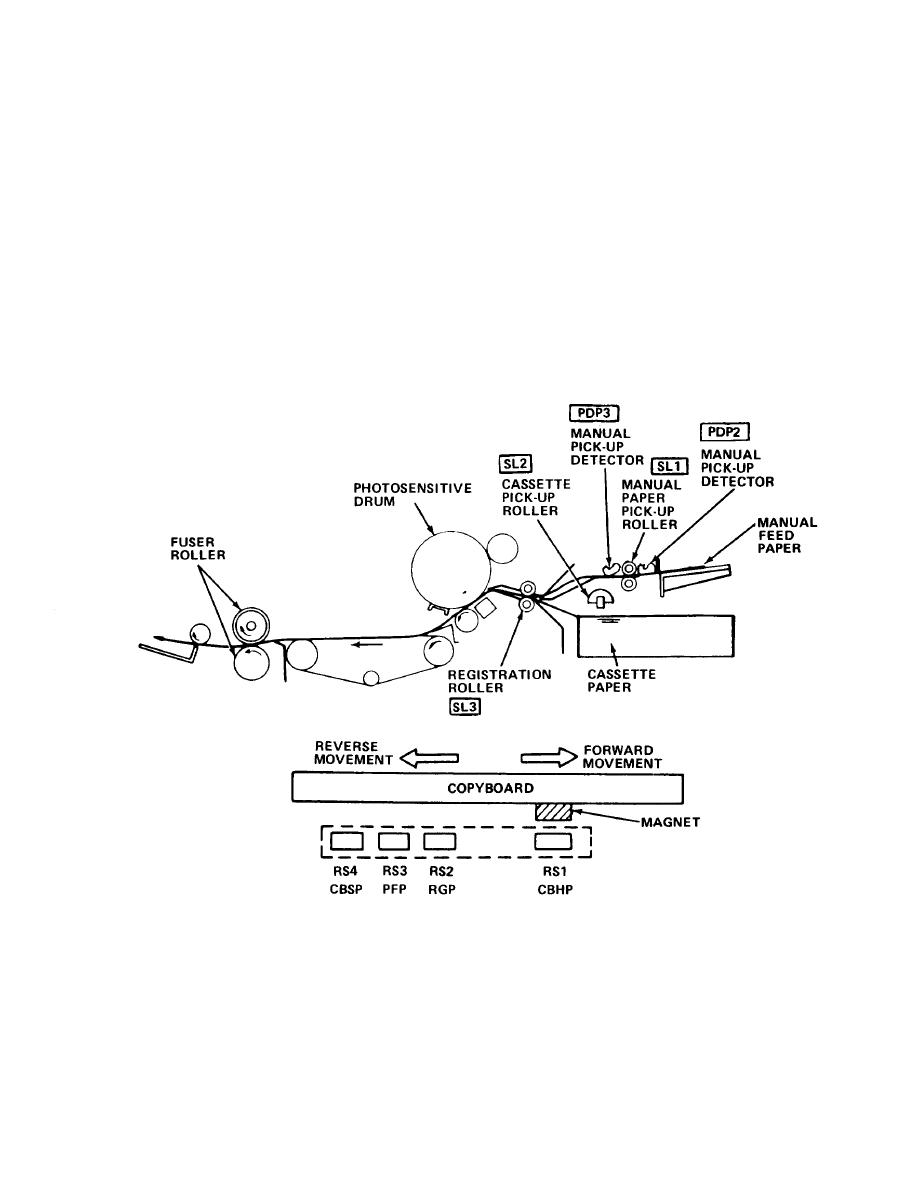
TM 5-6675-324-14
With no input, the clutch is de-energized. The voltage at the beginning of copy-
board forward movement is lowered to about half to minimize the shock of clutch
engagement. When CBFW = 1, Q203-27 = 1 and Q208-10 = O, C218 starts to charge
causing Q217 collector voltage to decrease enough to forward bias Q219 and Q220. As
C218 continues to charge Q219, forward bias increases and clutch voltage rises from
12 to 24 V. Q208-10 = O, causing blank exposure solenoid SL4 to energize. VR203
adjusts forward clutch initial voltage. The reverse clutch is actuated by CBRV
command (Q203-28 = 1), which makes Q207-7 = O, Q204-6 = 1, and Q204-4 = O, turning
Q218 off. At the same time, C21O starts to charge in preparation for copyboard
braking. At the end of copyboard reverse movement, CBRV = O and the reverse clutch
disengages, but the copyboard does not stop immediately because of movement. To
stop the copyboard at its home position, the forward clutch is activated briefly to
act as a brake. At this time, Q203-28 = O, Q209-6 = O, and Q204-11 = O due to the
charge on C21O. When C21O starts discharging, Q204-4 = 1 and Q218, Q219, and Q220
conduct, energizing the forward clutch.
f. Copyboard and copy paper feed.
The main motor starts to turn the drum and the developing roller. The halogen lamp
lights to precondition the drum. The preconditioning exposure adjusts the re-
sistivity of the cadmium sulfide (CdS) layer of the photosensitive drum. The blank
exposure shutter is open and allows the low-intensity light of the halogen lamp to
illuminate the photosensitive drum.
3-15

